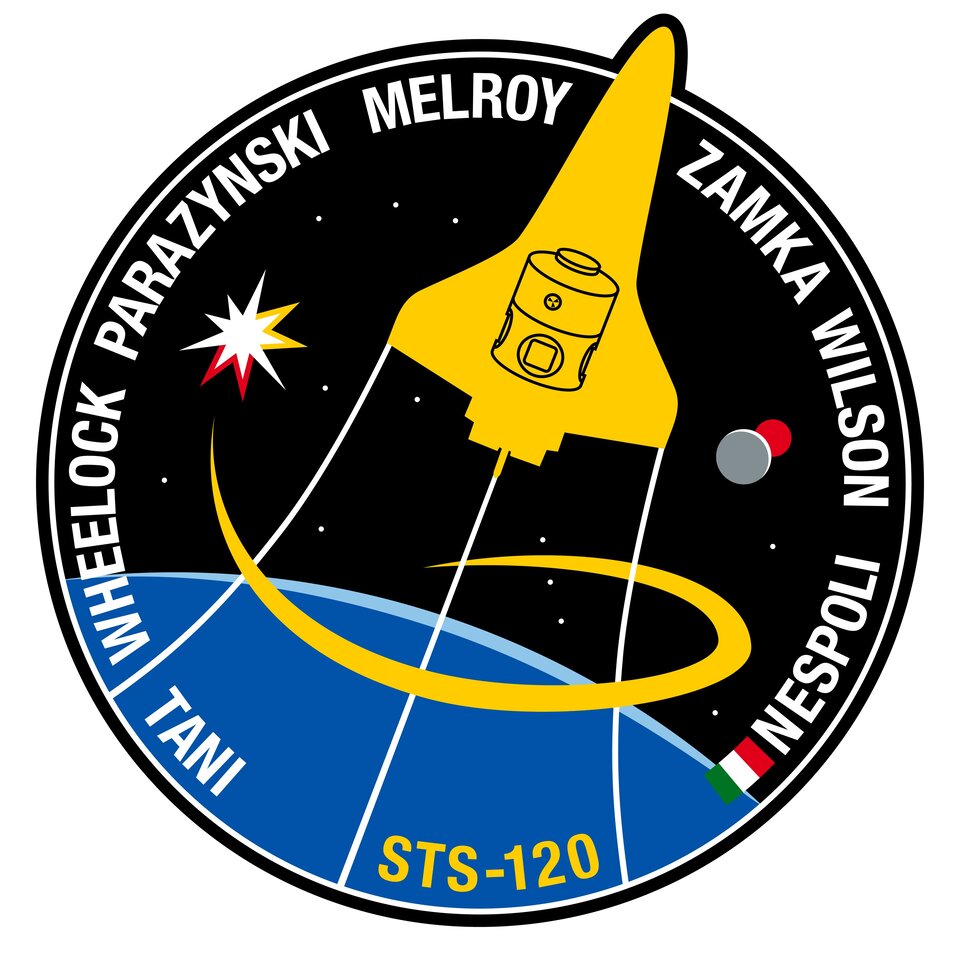Why Esperia?
The European mission was dubbed Esperia from the Ancient Greek name for the Italian peninsula. The chosen name reflects how Nespoli's Shuttle mission to the International Space Station was a showcase of Italian technology with the delivery of the Italian-built Node 2, and suggests Italy's long-term commitment to space exploration.
It also reflects how the flight opportunity stems from a visionary involvement of Italian space agency ASI and Italian industry in providing and developing three pressurised cargo containers for NASA (the Multi-Purpose Logistic Modules or MPLMs) under a bi-lateral agreement within which this flight fell.
Mission logo
The creation of the mission logo was entrusted to world famous designer Giorgetto Giugiaro and Italdesign SpA under a sponsorship agreement with the ASI. The logo depicts how the Esperia mission is key in the completion of the International Space Station, which is shown at the top of the image. The logo also depicts this mission as a stepping stone to further exploration with the moon (in white) and Mars (in red).
The key role of Italy and ASI in Europe and in the international arena, not only for this mission but for future exploration is depicted by the presence of the red, white and green Italian flag colours to the bottom right of the logo and the fact that the colour composite of the yellow flight path to the Station combined with the blue-coloured Earth also provides green, which together with the colours of the Moon and Mars also provide the colours of the Italian flag.

Shuttle mission patch
The STS-120 patch reflects the role of the mission in the future of the space programme. Node 2, the doorway to the international laboratory elements, is shown in the shuttle payload bay.
On the left of the shuttle the star represents the International Space Station with the red-coloured points representing the current location of the P6 truss with the solar arrays folded away and awaiting relocation when the crew arrives. During the mission, the crew will move P6 to its final home at the end of the port-side truss. The gold points represent the P6 truss in its new location, unfolded and producing power for science and life support.
On the right, the moon and Mars, with the constellation Orion rising in the background symbolises the vision of the future with the emphasis on exploration.


